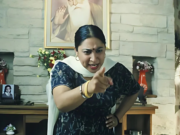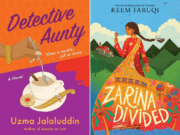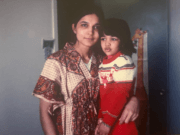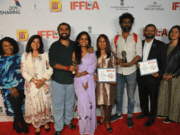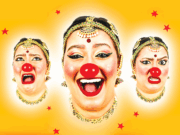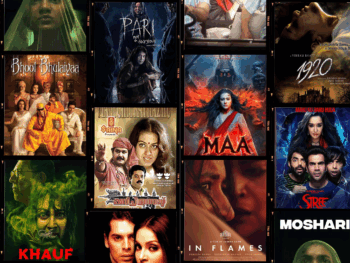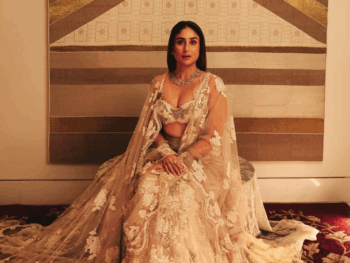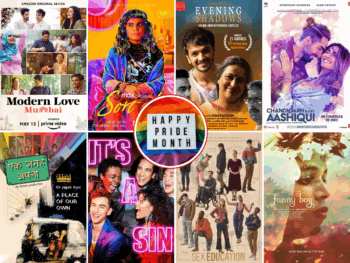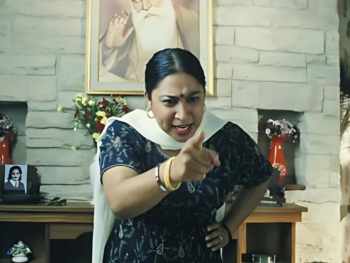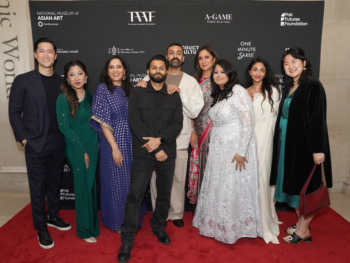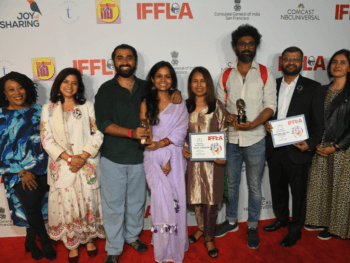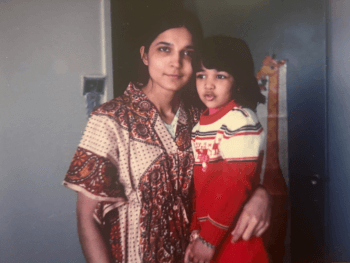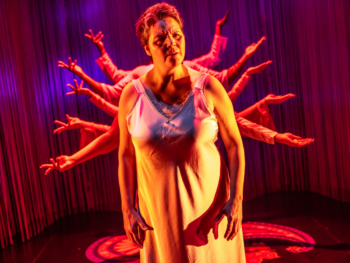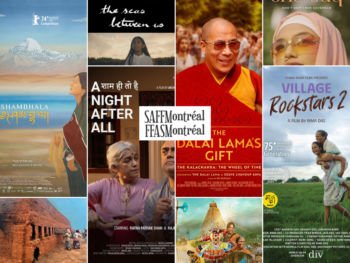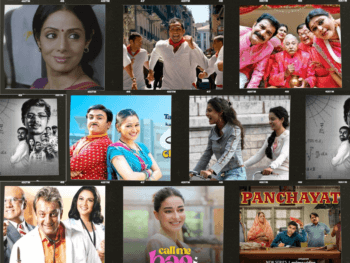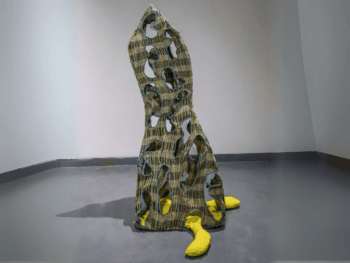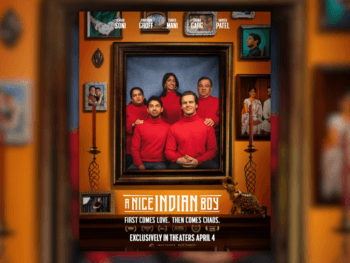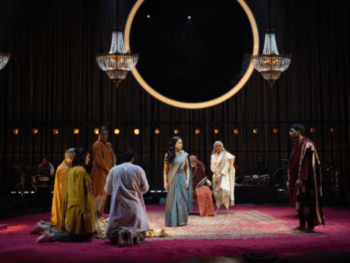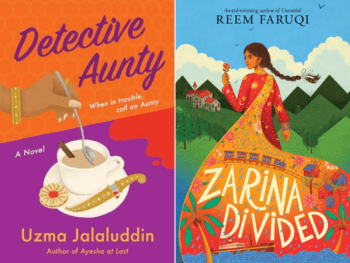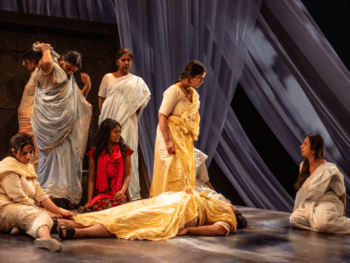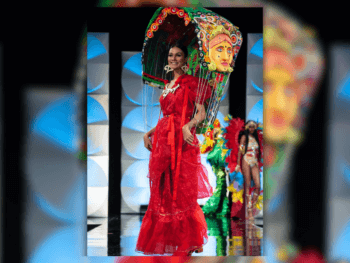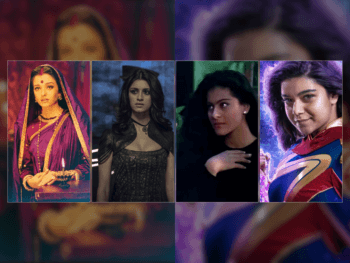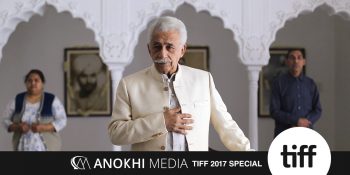
Two Bollywood icons and an up-and-coming director combine talents for The Hungry, a gorgeous, gory, female-centric, reimagining of a Shakespeare tragedy.
A micro-budget Shakespeare adaptation headlined by two legends of Indian cinema, The Hungry proved to be the best of the South Asian entries at TIFF 2017, and indeed, among the most striking films of the entire festival. The U.K.-India co-production originated as part of a competition put on by Film London and Cinestaan, challenging independent filmmakers to commemorate the 400th anniversary of the Bard’s death with a screenplay that put their own spin on one of his plays. Ultimately, a young director named Bornila Chatterjee, along with co-writers Tanaji Dasgupta and Kurban Kassam, emerged the winners, with a fresh, female-centric take on Shakespeare’s exquisitely gory revenge drama Titus Andronicus.
Where the play centres on Titus, a Roman general weathering the brutal vengeance of Tamora, Queen of the Goths, The Hungry flips the script. Tisca Chopra stars as Tulsi, a single mother in modern-day India whose first-born son is murdered by ruthless corporate tycoon Tathagat (Naseeruddin Shah). Meticulously plotting her payback, Tulsi becomes engaged to Tathagat’s cocaine-addled offspring Sunny (Arjun Gupta), and plans a wedding day that will be drenched in the blood of her enemy and everyone he holds dear. But of course, as someone who predates Shakespeare once said, she who embarks on a journey of revenge should dig two graves. In this case, even a dozen may not be enough.

For director Bornila Chatterjee, The Hungry marks just her second feature film, and it’s certainly an ambitious undertaking — revamping the work of history’s most famed playwright. But in examining the source material, it became clear to Chatterjee and her team how to make this iconic work their own.
“From the get-go, when you read Titus, Tamora is such a heinous villain. Yet the thing is, she was dealt such a difficult hand,” Chatterjee explains, as we sit on the terrace of a Toronto hotel, flanked by her co-writers, and several members of the cast. “She watches her son being sacrificed and she begs Titus [to take her instead] . . . She becomes the villain because after she sees her son die, she says, ‘Titus, I’m coming after you.’ Even though the very first scene of the play should have built up all this sympathy for her, you lose it because she does some really horrible things. And we were like, ‘Let’s follow her story.’ We want to start our film on her side. Take Shakespeare’s villain and turn her into our protagonist.”
The result was a dark, complex character that very much intrigued one of India’s preeminent thesps.
“Shakespeare’s always on everyone’s bucket list,” star Tisca Chopra explains of a role that allowed her to get back in touch with her theatre roots. “You haven’t lived if you haven’t done Shakespeare. I’ve done one other one, but that was the other end of the spectrum: A Midsummer Night’s Dream, which is farcical and insane. This one was dark as hell. I was entranced, and I was very frightened.”

Many Shakespeare adaptations, even ones that take place in the present day, use the Bard’s original dialogue word-for-word, iambic pentameter and all. The Hungry is not one of them; its words are as modern as its setting. So what marks it as Shakespeare?
“It’s Shakespearean in spirit,” Chatterjee explains. “The language [of Shakespeare] is very visual and very sort of seductive. One thing I talked about with [my cinematographer] is taking that language and transposing it to cinema, making it visual, because obviously we’re not having them say those things. He writes about the dark hole, he talks about the goats; there are all these sort of very visually arresting [aspects] that we really wanted to show onscreen . . . Indian weddings are very over-the-top; anything goes. But even with that in mind, with our costume designer, how do we bring that sort of violent edge to it? How do we make the jewellery seem like armour, how do we make the costumes look like they’re coming in for battle, in a certain way?”
“Shakespeare always has a sense of chorus, of what’s happening in the world around. That’s wonderfully integrated into the script,” Chopra chimes in. “And there’s also this sense of nature. Many years ago, I was flying with my husband, who’s a pilot over where the tsunami hit the worst in India. It was, like, a day after the tsunami. It looked like a giant claw had clawed a piece of the land away. I always feel like we make so much of our lives with these egos, but ultimately we’re not even specks, and that’s so Shakespearean . . . the sense of the chorus, the sense of power of nature and a sense of the futility of it all.”

Chatterjee certainly succeeded in making The Hungry a visually arresting piece of cinema — one staged and coloured to evoke cold beauty and looming dread. Delving into her process, the young director explains: “This one word that kept coming up in our conversations was ‘staging tableau.’ We did want it to feel very staged, to add to that fairy tale-esque vibe. I come from Indian classical dance background, which is very much like Shakespeare, it’s a dance drama; the dances are usually about gods and goddesses going through very extreme feelings, feeling very extreme emotions, and what’s really beautiful about it is how things are staged in very deliberate ways. It just adds to that heightened feel and it slowly takes you.”
The other heavyweight actor in the cast did not attend the festival, but his co-stars were eager to sing Naseeruddin Shah’s praises.
“We just keep falling in love with him every day,” says Sayani Gupta, who plays Tathagat’s free-spirited daughter, Loveleen. “I went and told him, ‘You’re the hottest man on set, and everybody’s swooning.’ Even the boys are swooning. Everybody had a crush on him.”

Both Gupta and Chopra had been mentored by Shah when they were coming up in the theatre scene, which led Gupta to anticipate many in-depth conversations about the complex father-daughter bond that exists between their two characters.
“I was really looking forward to it,” she says. “But [when we started filming], I was sitting on a makeup chair and he came and just took my hand and sat. That simple. And that was enough. That connect was so real, and it shows. When I was trying to feel what Loveleen would be feeling, all I had to do was just surrender and respond. And that’s only possible because you are cushioned with these terrific actors and a team and a crew and director and writers. All energies were channelled into making this film happen in the best possible way. And that’s the only time magic happens.”
In addition to feeling gratified that The Hungry centres on an intriguing, complex female character, everyone involved in making this film was very conscious of the female influence behind the camera, and the distinct perspective female filmmakers in general can bring to a story in an industry that’s still very much dominated by the male gaze.

Chopra recalls several times on set when Chatterjee would come in and make a small adjustment that “completely alters what you’re about to do.” For Chopra, such detail, such specificity is a hallmark of the female filmmaker’s gaze. “Humanity is never in broad strokes,” she explains. “It’s the little things that make all the difference. That is the sense that a woman can bring.”
“I always say, in most Bollywood films, [women] are like a flowerpot in the frame,” adds Gupta. “You look pretty and you have no life of your own, you don’t have a mind of your own. You’re trying to make life easy — or difficult — for the man. In The Hungry, it’s such a refreshing change.”
Main Image Photo Credit: tiff.net
Matthew Currie
Author
A long-standing entertainment journalist, Currie is a graduate of the Professional Writing program at Toronto’s York University. He has spent the past number of years working as a freelancer for ANOKHI and for diverse publications such as Sharp, TV Week, CAA’s Westworld and BC Business. Currie ...




